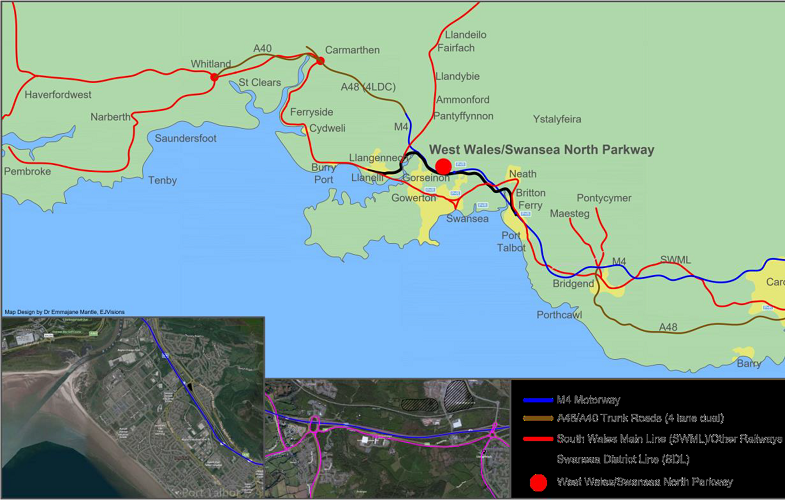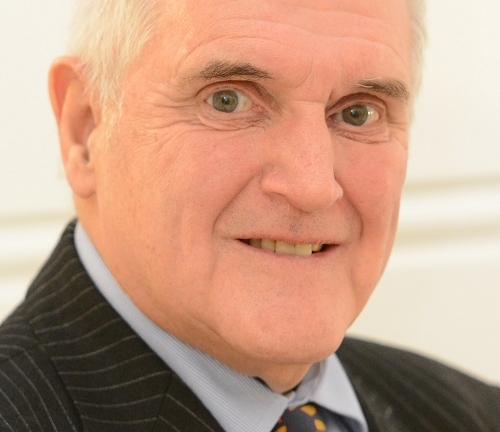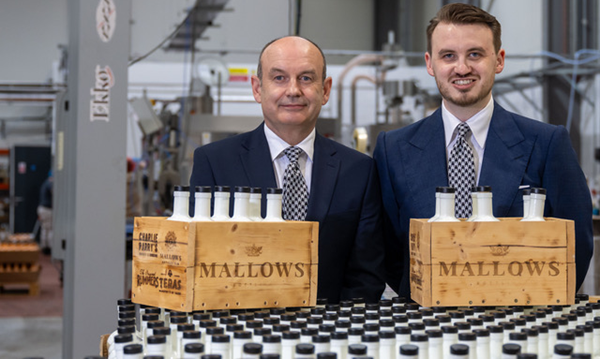In this week's exclusive transport column, Professor Stuart Cole CBE explores
the opportunities that a new rail service would bring to Swansea and West Wales.
The UK Government this week announced it would provide for increased capacity at Cardiff Central Station (up to £58 to ease the movement of many thousands of visitors to and from one of Europe’s leading ‘events cities. Whereas once it was only rugby internationals that attracted audiences of up to 80,000 people, the growth in entertainment and football events has made it almost a weekly occurrence.
The plan is to extend platform ‘0’ eastwards to accommodate full length GWR 10 inter-city or commuter trains capable of carrying upwards of 1,000 passengers each, provide a new queuing area and faster access to platforms. This means even the achievement of moving 37,00 supporters in four hours after the Wales v England rugby match earlier this year can be reduced.
A further £20m has been made available to construct a new railway station in north Swansea. The West Wales Parkway station (at Junction 46 adjacent to and easily accessible from, the former Felindre tinplate works site now cleared for redevelopment). The station will serve north and west Swansea (where over 6,000 new homes are planned), parts of Neath and of east Carmarthenshire. It will enable residents there to avoid journeys into central Swansea High Street station along peak period congested roads.
Traffic growth on the M4 north of Swansea is growing at a faster rate than around Cardiff and Newport and drivers from west Wales are now facing long peak period delays between junctions 41 and 45 in both directions.
The scheme will use the Swansea District Line built in 1913 by the original GWR as a fast route to their hoped for ‘Pembrokeshire Riviera’ to match their success in Devon and Cornwall. The First World War stopped further extension beyond Pantyffynon. The line can be seen from the M4 between junctions 46 and 47
Plans are now progressing with operational and economic assessment in hand. Swansea County and City Council has said it would support the introduction of a new direct rail service from west Wales if it fitted into the city’s transport strategy. The Welsh Government has said it should be part of wider transport investment in the region. The development plans for the Swansea Metro are consistent with this scheme and with the longer term reduction in journey times on the South Wales Main Line (although both are upwards of 20 years away the Swansea District Line scheme can be operational within 4 years). The evidence points to local authorities finding the service compatible with both transport and economic regeneration objectives.

This opportunity to develop rail services on the Swansea District Line will provide:
- A journey time reduction of 14 minutes or up to 22 minutes between those areas and Cardiff with its wide range of connections would give business travellers the service characteristics required compared with the car – more predictable journey times; an acceptable frequency (though half hourly is preferred) and at a reasonable cost
- A second train per hour between Carmarthen and Cardiff with a possibility of an hourly service to Milford haven and Pembroke Dock
- Swansea, Neath, Port Talbot and Bridgend residents with an extra hourly service and possibly a further service giving four trains per hour.
- No noticeable detriment to Neath or Swansea High Street stations whose existing services are guaranteed. Gowerton station, a short journey to Swansea, on the edge of the new service catchment area continues to increase passenger numbers. At Llanelli and Carmarthen stations frequency may increase demand.
- An opportunity to use a little used high quality railway line
- A further argument to increase line speed (through track straightening) on the South Wales Main Line. The DfT rule of thumb for major rail investment is four trains per hour.
- A key element in any train strategy for the Swansea Bay City Region is to reduce journey times and increase frequency.
- An attraction for motorway car users (from the M4) where traffic flows are high and where there is peak period congestion on adjacent motorways; where journeys are over an hour in length and where the car park is adjacent to the station. Criteria satisfied at Felindre. Parkway stations show greater passenger growth rates than other stations with immediate demand increases followed by a typical annual growth of 3.5%. Passenger demand at Tweedbank, a P&R station in Scotland, was forecast at 22,000 passengers annually; the actual was 300,000.
- A transport hub with new bus services connecting it to the enterprise zone and city centre and sharing this valuable rail corridor with the proposed metro service in north east Swansea
- An input to rural west Wales transport investment which rarely achieves an ‘acceptable’ benefit cost ratio compared with urban areas and as with all Wales’ railways this service would require a subsidy.
The scheme has attracted attention from the Welsh Government, the UK Government’s Wales Office and Department for Transport. The opportunity now presented is a one-off offer by the UK Government to fund a new £20m parkway station on the SDL which will increase the viability of the service.
Rail service frequency enhancement or journey time reductions to / from west Wales were not included in the new franchise. Consequently a proposed reduced journey time rail service to / from the west of the Swansea Bay City Region is an opportunity which fits strategically. It should be grasped with both hands.


More About Professor Stuart Cole CBE
Stuart is Emeritus Professor of Transport. Prior to that he was the first director of the Wales Transport Research Centre (2001) at the University of Glamorgan. Stuart was previously the first Director of Transport Research and Consultancy (TRaC) (1989 – 2001) at the University of North London (now London Metropolitan) which he joined in 1979.
Stuart is acknowledged by Parliament, the National Assembly and Government as one of Wales’ and UK’s leading experts in transport economics and policy.
Stuart has nearly 40 years of experience spanning local government, private sector and academic roles. He formerly worked for Cheshire County Council’s Transport Unit as Economic Advisor,
In his parliamentary work Stuart has regularly given oral evidence and produced reports for members. He has also given evidence to the House of Lords, House of Commons, the Richard Commission, Downing Street ‘Think-Tank’ etc on topics such as governance of transport in Wales and rail investment.
He also has a knowledge of transport planning in the EU member states through his transport work for the European Commission. He brings a working knowledge of both private and public sector transport operators / bodies in Wales, UK, Europe and North America. He therefore understands their sometimes differing credentials.
This practical approach reflects his use of a private sector, government and academic backgrounds (he has served in all three) to achieve relevant and practical solutions to transport and planning policy.










